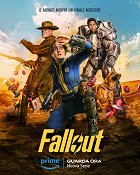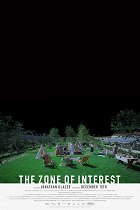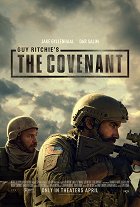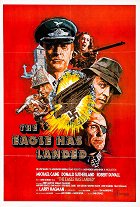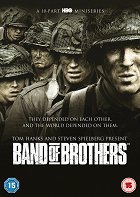War - Genres
Hottest on VOD Today
Characteristic features of war films
The term "war film" is used to designate a genre whose representatives refer to a specific armed conflict in the history of mankind, i.e. events of a military nature that occurred mainly in the period from the First World War (when war films crystallized as a separate genre) to the present. Some films do deal with older conflicts, often dating long before the invention of cinema, but these are usually considered historical films and thus fall into a different genre. The aim of war films is to convey the atmosphere prevailing on battlefields and military camps, to bring the audience closer to the common aspects of military life and the mood of the time in society and among the participants in the conflict, and to evoke the feelings of the characters confronted with the horrors of war and going through not only traumas, but also heroic deeds and the joy of victory. Many war films take an anti-war stance, others highlight the patriotism and heroism of their nation, while others even served as instruments of war propaganda in their time.
War films can deal with land, air and naval combat (but this is not a requirement; some war films do not depict combat or battles at all), and their plots and characters can be either entirely fictional or based on real events and real people. Typical themes are camaraderie between soldiers and their struggle for survival, depictions of war and all kinds of military operations, sacrifice and heroism, killing, death and destruction, attempts to escape and the punishment of deserters and other miscreants, the treatment of the wounded, the life of the civilian population during war, the absurd senselessness of war and the futility and inhumanity of combat, the moral questions raised by wars, and the effect of war and its consequences on the human psyche and on society as a whole.
War films differ from one another depending on the time and country in which they were made, the regimes and ideologies imprinted on them, their setting and the period they depict. Further differences may also arise depending on the form and sub-genre of the films in question (there are, for example, a number of war comedies, war documentaries and Holocaust films focusing on the genocide of the Jews and their misery in concentration camps), and whether they focus on spectacular battle scenes or the psychology of the characters, whether they approach the war from a general or individual perspective, and also what attitude they take towards it. In addition, some war themes (large armies, action-packed battles, traumatic memories, etc.) are often used in films of other genres and also in films that do not take place directly during the war, but whose heroes are, for example, war veterans.
Silent war films, the First World War
The motif of war has appeared in cinema since its earliest days – one of the earliest examples is a minute-long film by director Georges Méliès from 1897 called Combat naval en Grèce, which depicts the action on a battleship during the war between Greece and Turkey over the island of Crete, which took place that year. Before the First World War, the Spanish-American War of 1898 (the subject of a series of short documentary clips and feature reconstructions) and the American Civil War of 1861-1865 were frequent subjects of war-themed films (see, for example, D.W. Griffith’s The Fugitive from 1910, and the controversial and exceptionally successful The Birth of a Nation from 1915).
The First World War became an inspiration for many filmmakers and documentaries, with films made about military training practices, specific battles and military operations, and prisoners of war, among other things. War propaganda was also frequent, its purpose was to advertise the armed forces and gain popular support. For example, the British film The Battle of the Somme (1916) mixed propaganda with documentary footage from the trenches. D.W. Griffith's Hearts of the World (1918) was a propaganda film about the occupation of the French countryside that became significant and used studio reconstructions of actual events. Charlie Chaplin caused a stir with Shoulder Arms (1918), a slapstick war-comedy partly set in the trenches, released just two weeks before the declaration of the armistice, while Behind the Door (1919) remarkably combined a war drama with the theme of revenge. After the conflict, the French film I Accuse (1919), dealing with the negative consequences of the horrors of war, became a major anti-war work.
Many films during and after the war portrayed Germans as one-sided villains. Rex Ingram's strongly anti-war film The Four Horsemen of the Apocalypse (1921) was an example of this and was even banned in Germany for inciting hatred between nations. King Vidor's The Big Parade (1925) stood out for its realistic battlefield scenes and became one of the highest-grossing silent films of all time. The first ever Oscar in the Best Picture category went to the war film Wings (1927). Featuring military aviators, it set the conventions for filming aerial combat for many years to come, and was also the only silent film ever to win an Oscar in the main category.
The Big Parade (1925)
Photo © Metro-Goldwyn-Mayer (MGM)
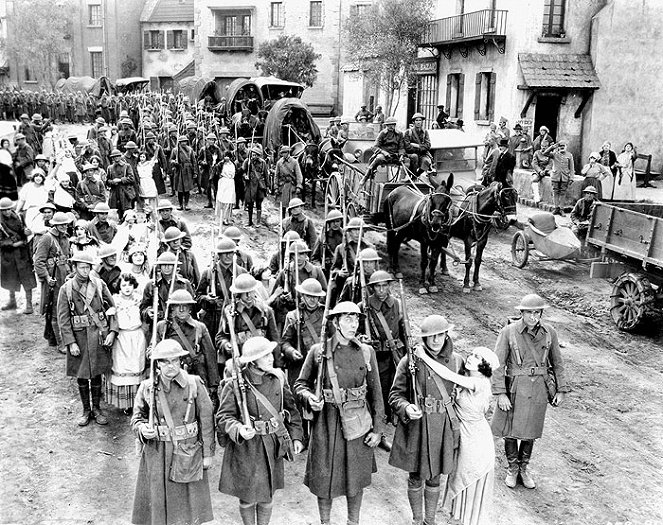
Early Sound War Films
After the advent of the sound era, cinemas were flooded with war films. 1930 alone saw the release of Howard Hughes's Hell's Angels, a big budget film about the clashes between British and German pilots, Howard Hawks’s The Dawn Patrol, which dealt with American pilots, James Whale's Journey's End, the story of two British officers in the French trenches, and All Quiet on the Western Front, an adaptation of Erich Maria Remarque's famous anti-war novel about German conscripts. Ernest Hemingway's novel “A Farewell to Arms”, the story of the tragic love between an ambulance driver and a nurse during World War I, was adapted to a film with the same title in 1932. In Germany, the events at the front were depicted in G.W. Pabst’s Comrades of 1918 (1930).
In John Ford's adventure-psychological war film The Lost Patrol (1934), the main characters are a group of British soldiers somewhere in the Middle East desert who lose their commander to a stray Arab bullet, the only one who knew his way around the arid location. The Dawn Patrol (1938), on the other hand, focused on pilots at a British air base and demonstrated the futility and senselessness of war through the characters of young men sent to their deaths. The same theme was also the subject of Jean Renoir's French anti-war film Grand Illusion (1937), which, however, did without fighting and reflected Europe's fear of further conflicts (two years before the beginning of the the Second World War).
All Quiet on the Western Front (1930)
Photo © Universal Pictures
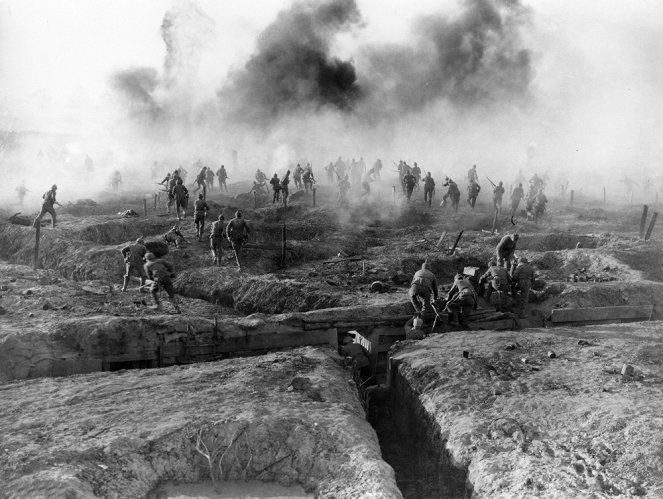
The Second World War
The onset of World War II provided a new impetus for the next wave of war films, and the conflict itself became one of the most rewarding subjects for many filmmakers to return to in the future. In the early 1940s, strongly patriotic films began to be made in Hollywood and the UK, for instance, Howard Hawks's two Oscar-winning Sergeant York (1941), which was based on the real-life story of one of the most celebrated soldiers of the First World War. Half of its twelve Oscar nominations went to Mrs. Miniver (1942), which had a strong propagandistic tone, as did Edge of Darkness (1943) and The North Star (1943), which highlighted the merits of the Allied armies and partisans. Glorifying propaganda documentaries were also frequent, some of them even produced directly in cooperation with the military. For example, the British documentary Target for Tonight (1941) told the story of bomber pilots and one of their missions, featuring the real protagonists of those operations. Animation studios also produced propaganda propaganda films, many of which came from Walt Disney, for example, the Oscar-winning short Der Fuehrer's Face (1942), which poked fun at life in Nazi Germany through the character Donald Duck. In contrast, British films such as In Which We Serve (1942) and The Way Ahead (1944) tried to be realistic and were not so burdened with propaganda.
Two of the best war films made in the USA during the conflict were Guadalcanal Diary (1943) and Thirty Seconds Over Tokyo (1944). Both placed emphasis on story, the former was about the battle between the Japanese and the Americans over the Pacific island of Guadalcanal less than a year after the attack on Pearl Harbor, and the latter dealt directly with the raid on Pearl Harbor and the American retaliation that followed it. Set in the same period was They Were Expendable (1945), about a small American naval unit trying to defend the Philippines from the Japanese offensive, while the events that followed the invasion were depicted in Bataan (1943). In contrast, The Story of G.I. Joe (1945) focused on the fatigue and anxiety felt by soldiers in the army. In Alfred Hitchcock's Lifeboat (1944), several passengers from a ship sunk during World War II find themselves in a boat with a surviving crewmember from the German U-boat responsible for the sinking. For the war documentary The True Glory (1945), American and British filmmakers collaborated to recapitulate the final stages of the war. In Nazi Germany, by contrast, war films such as Victory in the West (1941) or Kolberg (1945) served purely propaganda purposes.
In The Great Dictator (1940), a comedy that sharply satirised fascism, its director Charlie Chaplin played the double role of a Jewish barber and a tough dictator whose appearance and gestures were strikingly reminiscent of Adolf Hitler. Also clad in the practices of the Third Reich was the war-comedy To Be or Not to Be (1942), in which a group of actors who had been banned from their anti-Nazi play joined the resistance in occupied Poland. In contrast, in Sahara (1943) the conflicts of war were metaphorically present in the story of several men, representing the various Allied armies, fighting German soldiers over a well in the arid desert. An African hotspot was also the setting for Five Graves to Cairo (1943), whose protagonist accidentally discovers the camp of German commanders in an Egyptian hotel. Action in the North Atlantic (1943), on the other hand, was set in icy seas and featured a number of naval battle scenes. During the Second World War, there were also several war films dealing with earlier history, such as For Whom the Bell Tolls (1943), based on the novel of the same name, about guerrillas during the Spanish Civil War.
Sergeant York (1941)
Photo © Warner Bros. Pictures

American and British films after World War II
One of the most remarkable war films released shortly after World War II was the British Stairway to Heaven (1946), which combined colored drama with black-and-white dream sequences in a story about a young pilot who narrowly escapes death and is then visited by a heavenly messenger. American productions that made a significant impact include Twelve O'Clock High (1949), depicting the fate of American airmen in Great Britain, Sands of Iwo Jima (1949), about the American battle with the Japanese on the famous Pacific island, and Battleground (1949), the six-Oscar-nominated story of a paratroop unit cut off during one of the largest offensives of the Nazis, while Home of the Brave (1949) critically focused on the theme of racism in the American military.
The 1950s and 60s did not produce as many war films as the preceding decade, but their popularity was still high. The British film The Cruel Sea (1953), about the Battle of the Atlantic, and The Dam Busters (1955), about pilots dropping bombs on German dams, were both exceptionally successful. Eight Oscars went to Fred Zinnemann's From Here to Eternity (1953), which was essentially a romantic drama set in Pearl Harbor until the Japanese air raid violently interferes with the love affairs of several characters. The films Stalag 17 (1953) and The Colditz Story (1955) were both set in German prisons camps, with the latter popularising the theme of the escape, while Attack (1956) was about a conflict within a military unit led by an incompetent commander. 1957 was an exceptional year in terms of the war genre, many war films were released, including The One That Got Away, Men in War and Bitter Victory, among others. Most notably, that year saw the release of the seven Oscar-winning The Bridge on the River Kwai, directed by David Lean, which portrayed the abuse of power during the construction of a bridge in Burma by Allied prisoners under the supervision of their Japanese captors.
The Bridge on the River Kwai (1957)
Photo © Columbia Pictures Corporation
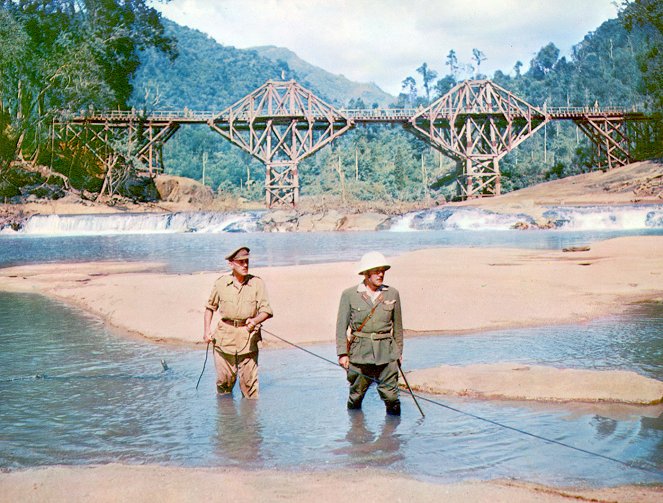
Other English-language war films from the 1960s to the 1980s
The Guns of Navarone (1961) received seven Oscar nominations with its story about a small sabotage unit's mission to destroy German guns on an island. Also competing for five golden statuettes was the spectacular The Longest Day (1962), an authentic look at the first day of the Normandy landings from the perspective of both sides. The theme of escaping from a prison camp was spectacularly rendered in John Sturges's The Great Escape (1963). War films such as The Train (1964) and the espionage-oriented Where Eagles Dare (1968), whose heroes try to free a British general captured by the Germans at the Eagle's Nest, used the war primarily as a backdrop for a parade of action scenes. In contrast, films such as Battle of the Bulge (1965), Battle of Britain (1969) and Battle of Midway (1976) focused on specific military actions.
The anti-war film The Long Day's Dying (1968), which told the story of three British paratroopers trapped in an abandoned farmhouse in enemy territory, relied on psychology and suspenseful atmosphere. Sidney Lumet's anti-war film The Hill (1965) was set in a disciplinary facility for British soldiers in the Libyan desert and criticised the unscrupulous methods of commanders who abuse their position. Robert Aldrich went against the war hero model in his film The Dirty Dozen (1967), whose anti-heroes were violent criminals preparing for a suicide mission involving the infiltration of a guarded mansion intended for meetings of high-ranking German commanders. In contrast, How I Won the War (1967), Catch-22 (1970) and Stanley Kubrick's Dr. Strangelove (1964), which used black humour to poke fun at the Cold War and the threat of nuclear war, took the path of war satire.
Tora! Tora! Tora! (1970), a factual and pathos-free account of the attack on Pearl Harbor from the perspective of both sides, became a success in Japan thanks to its balance and impartiality, while the biopic Patton (1970), which depicted the life of one of America's greatest military leaders, received seven out of ten Oscar nominations. In the second half of the 1970s, various World War II themes were explored in films such as The Eagle Has Landed (1976), The Wild Geese (1978), a loose sequel to The Guns of Navarone called Force 10 from Navarone (1978), and A Bridge Too Far (1977), about the largest airborne operation in history. The pathetic and pompous nature of some American war films from the 1960s and 70s was crashed by director Steven Spielberg with his comedy farce 1941 (1979), and he followed it with the six Oscar-nominated war drama Empire of the Sun (1987), in which he portrayed the events in a Japanese prison camp through the eyes of an 11-year-old boy. Merry Christmas, Mr. Lawrence (1983) was set in a Japanese prison camp and Hope and Glory (1987) also looked at the war through the eyes of a child.
In addition, these decades saw a considerable number of films that revisited the events of the First World War. The most famous of these include Kubrick's strongly anti-war Paths of Glory (1957), in which an idealistic colonel confronts the absurd actions of his superiors, and David Lean's epic and seven Oscar-winning Lawrence of Arabia (1962), which combined a war theme with the biopic of a British officer who succeeded in uniting the Arab tribes in their struggle against the Ottomans. The anti-war film Johnny Got His Gun (1971) was based on Dalton Trumbo's own novel about a crippled soldier, Jack Gold's Aces High (1976), a film about World War I aviators, offered aerial duels between biplanes, and Peter Weir's Australian drama Gallipoli (1981) told the story of the fighting on the Turkish peninsula from the point of view of an Australian-New Zealand army corps.
A Bridge Too Far (1977)
Photo © United Artists

Italian and Spanish war films after World War II
Italian war films were strongly influenced by the rise of neorealism, a movement that reflected the social reality of post-war Italy and focused on authentic locations and stories from the lives of the poor and the working class. Rome, Open City (1945) helped establish this trend at the end of the Second World War, it portrayed the fates of ordinary people in German-occupied Rome and featured largely non-actors as well as children, symbolizing the hopeful future of Italian society. It was followed by, among others, the anthology film Paisan (1946) and Two Women (1960), about a mother and daughter who escape from bombed-out Rome to a mountain village community. Films such as Blackout in Rome (1960), Everybody Go Home (1960), The Four Days in Naples (1962) and The Skin (1981) were also set during the Second World War. In contrast, The Great War (1959) and Many Wars Ago (1970) revisited the events of the First World War, while The Battle of Algiers (1966) focused on the struggle for Algerian independence in the 1950s and 60s.
There was a also a purely commercial war genre that emerged in Italy called "guerra". It consisted mainly of action-adventure films that exploited attractive war themes, such as Hell in Normandy (1967), The Battle of the Damned (1969) and Rangers Attack at Hour X (1970). Cheap guerra films were also being made in Spain at the same time, for instance, The Battle of the Last Panzer (1969) and When Heroes Die (1970). The more serious Spanish war films, however, were dominated by the themes of the Spanish Civil War and subsequent Francoist fascism, which were only properly reflected after the dictator's death, in the second half of the 1970s. Life during and after the war was depicted in films such as The Spirit of the Beehive (1973) and Bicycles Are for the Summer (1984). Other Spanish war films include the satirical The Heifer (1985) and the award-winning Alan, Carmela! (1990).
The Battle of Algiers (1966)
Photo © Argent Films
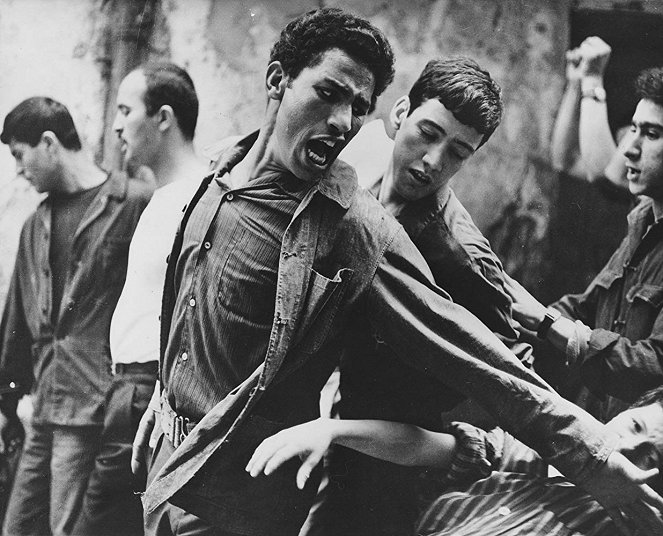
European war films after World War II from other countries
The French war drama Forbidden Games (1952) received an honorary Oscar and a number of other international awards with its story about a pair of children playing slightly morbid games. Many other French war films were made in international co-productions, often with Italy, Spain or West Germany. Some of the best known include Taxi for Tobruk (1960), The Carabineers (1963), Weekend at Dunkirk (1964), Army of Shadows (1969), The Old Gun (1975), The Last Metro (1980) and The Vultures (1984). French war comedies were also popular, for example Don’t Look Now: We’re Being Shot At (1966), Rookies Run Amok (1971) and Now Where Did the Seventh Company Get to? (1973). In West Germany, films such as The Bridge (1959) and The Tin Drum (1979) were successful, while East German films such as Stars (1959), The Gleiwitz Case (1961), Naked Among Wolves (1963) and The Woman and the Stranger (1985) are also worth mentioning.
In Poland, one of the main representatives of the war film genre was the director Andrzej Wajda, who became famous for A Generation (1955), Canal (1956), Speed (1959), Samson (1961) and Landscape After Battle (1970). Other Polish war films worth highlighting include Eroica (1957), Cross of Valor (1958), Birth Certificate (1961), and the three-part war comedy How I Unleashed World War II (1969). In Czechoslovakia, the war genre included, for example, the popular pair of comedies The Good Soldier Schweik (1956) and I Dutifully Report (1957), set during the First World War, and then, among others, Captain Dabac (1959), Laundryboy (1960), Death Is Called Engelchen (1963) and The Assassination (1964), as well as Riders in the Sky (1968), a film about Czechoslovak airmen in the service of the British Royal Air Force. The anti-war film Signum Laudis (1980), which criticised the abuse of power and fanatical and blind following of orders against the background of two stories from the First World War, and Cuckoo in a Dark Forest (1984), co-produced with Poland, were also significant.
Among Yugoslav productions, the war dramas The Battle of Neretva (1969), made as a tribute to the partisans fighting in World War II, and Occupation in 26 Pictures (1978), the story of three friends from wealthy Dubrovnik families who are torn apart by the war, have made their mark on history. Other films worth mention include The Girl (1965), The Demolition Squad (1967), The Morning (1967), Bloody Fairytale (1969), Walter Defends Sarajevo (1972) and The Fall of Italy (1981), as well as the Finish The Unknown Soldier (1955), its remake from 1985, The Winter War (1989), the Swedish Shame (1968), the Hungarian The Fifth Seal (1976), the Dutch Soldier of Orange (1977) and The Search (1948), a Swiss-American co-production made shortly after World War II.
The Woman and the Stranger (1985)
Photo © Progress Film-Verleih
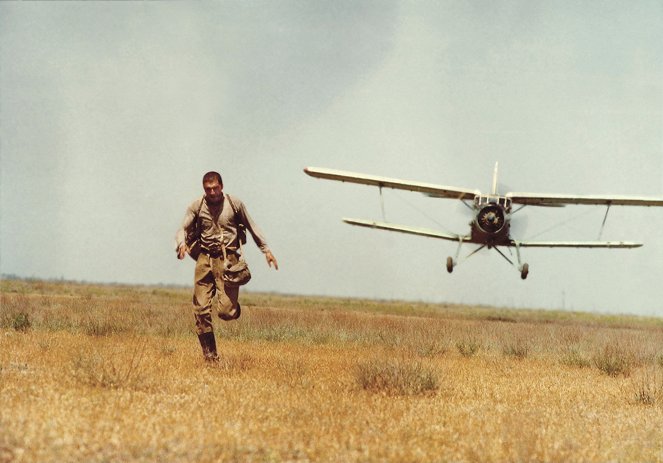
Soviet war films
The most famous Soviet film of the silent era was Battleship Potemkin (1925), which went down in history, among other things, with its evocative scene of the massacre on the Odessa steps, and whose director, Sergei M. Eisenstein, became one of the main representatives of the Soviet montage school. Eisenstein followed it with October: Ten Days That Shook the World (1928) for the tenth anniversary of the Russian October Revolution, and The End of St. Petersburg (1927) and Moscow in October (1927) were also made on the same occasion. Other events of the Russian Civil War were depicted in Chapayev (1934) and Lenin in 1918 (1939), and later in The Commissar (1967), whose heroine is a member of the Red Army torn between revolutionary fanaticism and maternal feelings. The films made during the Second World War were often burdened with propaganda; it was common to portray the patriotism, valour and determination of the heroic Russian soldiers and to denigrate the German enemy by pointing out their monstrous deeds. For example, Moscow Skies (1944) and The Sky Slow-Mover (1945) portrayed the heroism of Soviet airmen, while Son of the Regiment (1946), about an orphan boy hiding in an artillery unit, targeted young viewers through its child protagonist.
Dedicated patriots and indomitable heroes from the ranks of ordinary working people were a frequent theme even after the war. For example, Story of a Real Man (1948) depicted the real-life drama of a downed pilot who manages to crawl to freedom after crashing into enemy territory despite severe injuries. However, from the second half of the 1950s onwards, many Soviet films lost their emphasis on patriotism and instead criticiced the war and radically reflected its negative impact on the landscape, society and the fate of people. Mikhail Kalatozov's The Cranes Are Flying (1957), for example, used the story of a young Moscow woman to show how the war had cruelly affected the lives of the majority of the population, and Sergei Bondarchuk's The Destiny of a Man (1959) showed how the war had deprived the family of a man who had been called to the front of almost everything. Images of a country devastated by war were the subject of Grigoriy Chukhray's Ballad of a Soldier (1959), whose good-hearted young hero is rewarded with a pass for disarming enemy tanks, which he uses to travel far to visit his mother, while in his debut Ivan's Childhood (1962), director Andrei Tarkovsky focused on the story of an 11-year-old boy whose mother was murdered during the war.
Director Yuriy Ozerov became famous for his epic, sprawling chronicles, such as the five-part Liberation series (1969-1971), the seven-hour war drama Soldiers of Freedom (1977), the six-hour epic The Battle for Moscow (1985), and the three-hour Stalingrad (1990), which was no longer ideologically biased and took a more or less balanced view of one of the most crucial battles of World War II. Igor Gostev's partisan trilogy, consisting of Front Without Flanks (1974), Front Beyond the Front Line (1977) and Front in the Rear of the Enemy (1981), was also significant. The film The Hot Snow (1972) told the story of Russian artillerymen trying to destroy German tanks during the siege of Stalingrad, while Blockade (1974) dealt similarly with the siege of Leningrad. One notable war film was the Oscar-nominated The Dawns Here Are Quiet (1972), about an all-female military regiment assigned to a volunteer commander. Bondarchuk's film They Fought for Their Country (1975), about the retreat of Soviet troops from the Germans heading for Stalingrad, and The Ascent (1977), about the fate of two Belarusian partisans in German captivity, also won a number of awards, and so did Elem Klimov's drama Come and See (1985), which depicted the horrors of war from the perspective of a 14-year-old partisan whose mounting psychological trauma gradually takes its toll on his physical appearance, transforming him beyond recognition.
They Fought for Their Country (1975)
Photo © Mosfilm
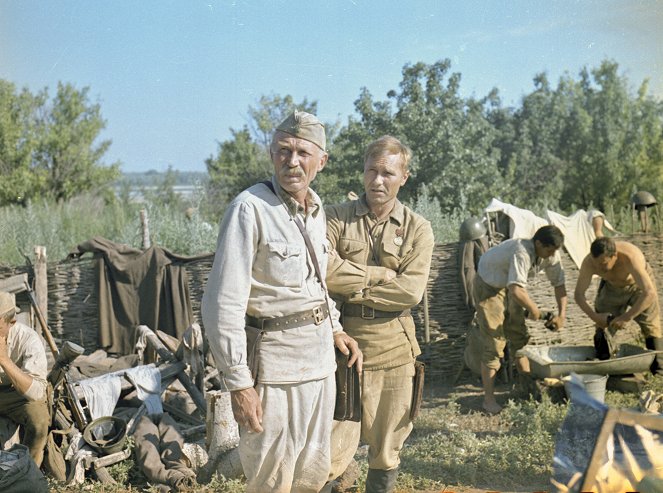
The Vietnam War
The almost twenty-year conflict in Vietnam, in which the United States were heavily involved, was not reflected in Hollywood until almost the end of it. The film industry was in crisis at the time, and the topic was a very sensitive issue due to the strong protests about the country’s involvement in the conflict. One of the few exceptions was The Green Berets (1968), a patriotic film made during the war about a colonel tasked with kidnapping a Vietnamese commander. Robert Altman's five-Oscar-nominated comedy M*A*S*H (1970) may have been set in Korea, but was otherwise a clear allusion to the Vietnam War. It would not be until the second half of the 1970s that filmmakers began to focus on this topic, often presenting Vietnamese soldiers in a stereotypical way, attributing to them excessive inhumanity and cruelty, and Vietnamese civilians as passive victims or prostitutes. In contrast to this was, for example, the Vietnamese film The Abandoned Field: Free Fire Zone (1979), which approached the hostile Americans with leniency and understanding.
One of the most famous films from this period is Michael Cimino's five Oscar-winning psychological war drama The Deer Hunter (1978), which used the story of several men traumatised by the horrors of war to portray the contrast between the idyllic life before their entry into conflict and the uneasy existence of disappointment and scepticism after their return, or Francis Ford Coppola's eight Oscar-nominated Apocalypse Now (1979), which evoked the atmosphere of the hell of war in the Vietnam jungle through the fate of an American captain searching for a mysteriously missing colonel. Hal Ashby's intimate anti-war film Coming Home (1978), on the other hand, avoided the turmoil of war, focusing on the tribulations of a soldier and his wife, who falls in love with a disabled war veteran during her husband's absence. A major contribution to the war film genre was Platoon (1986), which its director Oliver Stone made based on his memories of his own time in the US Army on Vietnamese soil. Stone later returned to the theme of Vietnam in Born on the Fourth of July (1989), a film about a paralysed war veteran, and in the drama Heaven & Earth (1993). Stanley Kubrick also made his mark in the history of war cinema with Full Metal Jacket (1987), the first half of which is set in a harsh Marine Corps training centre and the second half takes place on the Vietnam front.
Other films dealing with the Vietnam War include First Blood (1982), which featured a veteran unable to adjust to normal life after returning home, and its much more action-packed sequel, Rambo: First Blood Part II (1985), in which the explosive slaughter of dozens of communist enemies served as a cure for the Americans' national anguish over losing the war. They were followed by, among others, Coppola's Gardens of Stone (1987), John Irvin's Hamburger Hill (1987), Platoon Leader (1988) and Casualties of War (1989), and Barry Levinson's Good Morning, Vietnam (1987), told from the perspective of a popular Army radio host, while Robert Zemeckis's Forrest Gump (1994), which took in six of its thirteen Oscar nominations, depicted the Vietnam War from the point of view of a simpleton who on his life's journey was personally present at the most pivotal events in American history from the 1950s to the 1980s. Later films about the Vietnam conflict include Tigerland (2000), We Were Soldiers (2002), The Last Full Measure (2019), Danger Close: The Battle of Long Tan (2019) and Da 5 Bloods (2020), in which four veterans return to Vietnam years later to look for the remains of their fallen commander and a buried treasure.
Apocalypse Now (1979)
Photo © American Zoetrope

Submarine War Films
Submarine films represent a specific sub-genre within war films, focused on naval operations taking place under the sea. Their plots revolve around the action in a submarine and their characters are members of the not very large crews facing attacks from enemy vessels, typically destroyers or other submarines. Instead of wild combat action, submarine films tend to rely more on building psychological tension, heightened by working with atmosphere (claustrophobic feelings of confined space, ambient pressure and the constant danger of technical failure or mechanical damage to the hull), sound (sonar beeping, screeching metal joints, the more or less distant explosions of depth charges, etc.) and silence (because the crew usually tries not to make noise when encountering an unseen enemy). Most submarine films are set during the First and especially the Second World War, but some also take place during the Cold War. They also include non-war films about submarines, falling, for example, into the genre of science fiction.
Although submarines already appeared in films made during and after the First World War, full-fledged submarine films did not begin to be made until somewhat later. Frank Capra's Submarine (1928), for example, told the story of two former friends, one of whom is trapped in a broken submarine and the other is an experienced diver who sets out to rescue him. Most of the plot of the German film Dawn (1933) already takes place in the bowels of a submarine, as in the case of the American film by John Ford Submarine Patrol (1938). The heroes of the British film The Spy in Black (1939) had to deal with German spies and a submarine captain tasked with sinking the British fleet. Submarine films such as Crash Dive (1943), Destination Tokyo (1943) and We Dive at Dawn (1943), as well as the purely propagandistic 49th Parallel (1941) were made during World War II. Films that came to prominence after the war include Operation Pacific (1951), Above Us the Waves (1955), The Enemy Below (1957), Run Silent, Run Deep (1958) and Torpedo Run (1958).
Submarine films set during the Cold War include The Bedford Incident (1965) and Gray Lady Down (1978), and later also John McTiernan’s The Hunt for Red October (1990), whose protagonist has to prove that a Soviet submarine approaching the US is actually commanded by a captain longing to emigrate, and Tony Scott’s Crimson Tide (1995), about a mutiny on the most destructive nuclear submarine of the US military. Wolfgang Petersen returned to the events of World War II in his German war epic The Boat (1981), which was nominated for five Academy Awards and is still considered one of the best submarine films in the history of cinema. Films made shortly after the turn of the millennium included U-571 (2000), an action story about the search for the Enigma decryption device aboard a damaged German submarine, and K-19: The Widowmaker (2002), about the effort to repair a nuclear reactor in a Soviet submarine threatened with a devastating explosion. Later releases include the action war film Hunter Killer (2018) and the less action-packed drama Kursk: The Last Mission (2018), inspired by a real-life event from 2000, when a Russian submarine sunk with its crew after the sudden explosion of several torpedoes.
The Boat (1981)
Photo © Bavaria Film International
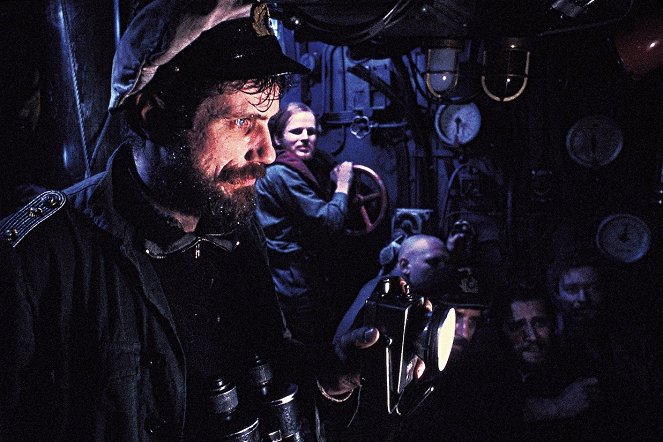
War films from China and Japan
The war genre became prominent in China at the turn of the 1930s and 40s, with films that were usually strongly patriotic, which was underscored by the Communist takeover in 1949. For example, in New Heroes and Heroines (1950), depicting the struggles of peasants in the Sino-Japanese War, the main protagonists were already a pair of heroic peasants, revolutionaries and members of the celebrated Communist Party, and the victorious battles of the Chinese People's Liberation Army were also the subject of From Victory to Victory (1952). Most Chinese films (not just war films) in the decades that followed were heavily propagandistic, from the drama Battle on Shangganling Mountain (1956), depicting the heroic sacrifices of Chinese soldiers fighting the Americans in the Korean War, to Sparkling Red Star (1974), made during the Cultural Revolution.
Change came with the war film One and Eight (1984), which was backed by a new generation of ideologically unencumbered filmmakers, focusing on story, characters and artistic values, and paving the way for later films such as Wreaths at the Foot of the Mountain (1985) and Red Sorghum (1987). The changing political situation in China was depicted in the war drama To Live (1994) against the backdrop of one family's story, and Assembly (2007), set in the Second World War and trying to emulate American war films, while City of Life and Death (2009) dealt with the massacre of the Chinese population by Japanese soldiers in the second half of the 1930s, a subject to which many filmmakers have returned. Modern war films such as Sky Hunter (2017), Operation Red Sea (2018) and the series Wolf Warriors (from 2015 onwards) have been successful as action entertainers with a patriotic tone, aiming to present China as an invincible power not to be messed with.
During World War II, Japan produced mainly propaganda films, which were replaced in the following decade by anti-war films focusing on spiritual and pacifist messages (for example, the poetic The Burmese Harp from 1956) and individual human destinies (Fires on the Plain from the same director in 1959). The Human Condition, on the other hand, was a significant achievement, a monumental six-part, nearly ten-hour war fresco filmed between 1959 and 1961, depicting the fate of a young soldier during World War II. In contrast, Japan's Longest Day (1967) and The Battle of Okinawa (1971), among others, were more traditional war films, while films such as Under the Flag of the Rising Sun (1972), Children of Hiroshima (1952) and Children of Nagasaki (1983) dealt with post-war trauma. Japanese anime has also reflected war themes, for example in Barefoot Gen (1983), Grave of the Fireflies (1988) and In This Corner of the World (2016).
Children of Nagasaki (1983)
Photo © Shochiku
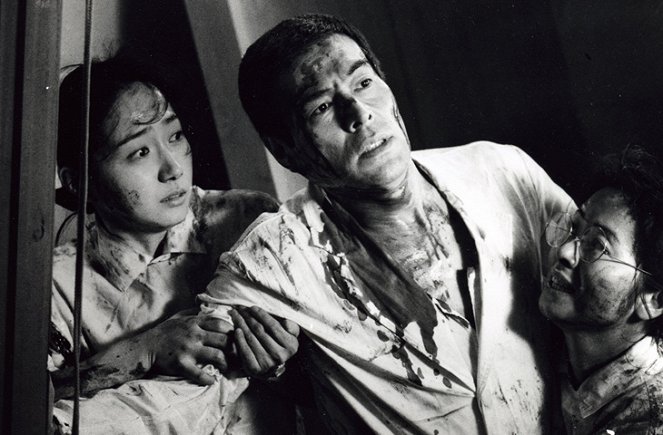
American and British war films of the 1990s
Memphis Belle (1990), a tribute to the American crew of the British Air Force's famous World War II bomber, was notable for its realistic aerial scenes. A Midnight Clear (1992) was also set during World War II, as was the nine Oscar-winning romantic war drama The English Patient (1996), in which a wounded soldier tells a nurse his memories of events before and during the war. Neil Jordan's Michael Collins (1996), in contrast, revolved around the founder of the Irish Republican Army, who managed to unite the masses during Ireland's fight for independence. Courage Under Fire (1996) and the comedically stylized Three Kings (1999) were inspired by the Gulf War, as was Sam Mendes's Jarhead (2005), set in the sun-drenched Arabian desert. In The Thin Red Line (1998), director Terrence Malick portrayed the battle between the Americans and the Japanese for the Pacific island of Guadalcanal, focusing not so much on the turmoil of war as on a psychological dive into the souls of soldiers filled with fear and uncertainty.
Steven Spielberg won seven Oscars with Schindler's List (1993), an acclaimed Holocaust film about a businessman who rescued of hundreds of Jews from concentration camps, and would later celebrate further success with Saving Private Ryan (1998), which took in five of its eleven Oscar nominations and injected the war film genre with a modern innovation. Its story of a rescue mission, which starts with an almost half-hour naturalistic sequence of the Normandy landings filmed on handheld camera, became a great success with audiences and revived the interest in World War II themed films. It was followed thematically by Enemy at the Gates (2001), Hart's War (2002) and Pearl Harbor (2001), in which director Michael Bay mixed the plot of the famous attack with the story of a love triangle.
Saving Private Ryan (1998)
Photo © 1998 Dreamworks Pictures
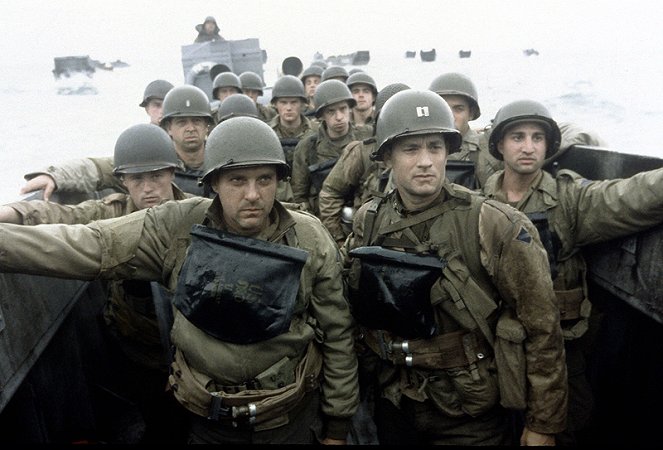
American and British war films after 2001
The events of September 11, 2001 led to the U.S. War on Terror, which inspired, among others, the film Zero Dark Thirty (2012), about the military raid on Osama bin Laden. The subsequent war in Afghanistan was the subject of films such as Lone Survivor (2013) and 12 Strong (2018), while the war in Iraq was the subject of The Messenger (2009), Green Zone (2010), the six Oscar-nominated American Sniper (2014) and the six Oscar-winning war drama The Hurt Locker (2008), which dealt with the lives of the members of an army bomb squad. Ridley Scott's war drama Black Hawk Down (2001) focused on the fate of an elite US Army unit that fundamentally underestimated the strength of the enemy during an operation in Somalia. Tears of the Sun from 2003 (Nigeria), Hotel Rwanda from 2004 (Rwanda), Beasts of No Nation from 2015 (Liberia) and 13 Hours: The Secret Soldiers of Benghazi from 2016 (Libya) were also set in African countries.
World War II was the setting for Enigma (2001), Defiance (2008) and the seven Oscar-nominated Atonement (2007), famous for its one-shot Dunkirk beach scene and postmodern meta-fictional ending. In 2006, Clint Eastwood directed a pair of films devoted to the Battle of Iwo Jima, providing an American perspective in Flags of Our Fathers and a Japanese perspective in Letters from Iwo Jima. The protagonist of Bryan Singer's Valkyrie (2008) was a war-scarred colonel tasked with assassinating Adolf Hitler, who would later appear in Quentin Tarantino's Inglourious Basterds (2009), a film that strayed into the waters of alternate history by fundamentally altering the course of World War II in a tale of a military unit specialising in killing high-ranking Nazis. Steven Spielberg returned to World War I in War Horse (2011) and filmed it from the perspective of the main character, a horse.
In The Imitation Game (2014), nominated for eight Academy Awards, the protagonist was Alan Turing, a mathematician and cryptanalyst whose team managed to crack the Enigma code during World War II. The Second World War was also revisited in David Ayer's Fury (2014), Robert Zemeckis's Allied (2016), in which a married pair of British wartime spies are torn apart by mutual suspicion, and Joe Wright's six-Oscar-nominated Darkest Hour (2017), which focused on Winston Churchill. There’s also Christopher Nolan's Dunkirk (2017), nominated for eight statuettes and assaulting audiences' senses with the story about the evacuation of Allied troops from northern France; Roland Emmerich's Midway (2019), a remake of the 1976 film of the same name; and Aaron Schneider's Greyhound (2020), which told the story of a sea captain in the Battle of the Atlantic. Sam Mendes's ten Oscar-nominated war drama 1917 (2019), telling the story of two soldiers' journey to rescue a unit heading into an enemy ambush, was a visual treat, supported by a heady cinematography that made time and space present through long shots.
Black Hawk Down (2001)
Photo © 2001 Columbia Pictures

Russian, Polish, French and German war films from the 1990s onwards
Director Nikita Mikhalkov won an Oscar for Burnt by the Sun (1994), a poetically melancholic drama set during the Stalinist purges, but he would take an unexpected turn into spectacular war pathos in its loose sequels, Burnt by the Sun 2 (2010) and Burnt by the Sun 2: Citadel (2011). He was followed by Sergey Bodrov with Prisoner of the Mountains (1996), an intimate film in which a reclusive mountain man captures two soldiers in his home in an attempt to trade them for his imprisoned son. The action-war film The War (2002) was set during the Chechen War, The 9th Legion (2005) focused on the Soviet-Afghan War, The Cuckoo (2002) told the story of two runaway soldiers taking refuge with a young Lapland woman at the end of World War II, and The Admiral (2008) went back to the Russian Civil War. Other World War II events were the subject of Attack on Leningrad (2007), Fortress of War (2010), Battle for Sevastopol (2015), Panfilov’s Twenty Eight (2016), T-34 (2018) and Unknown Battle (2019), among others, most of which relied primarily on perfectly depicted action.
The award-winning film Europa Europa (1990), dealing with the fate of a Jewish young man dragged through the events of World War II, brought Polish director Agnieszka Holland to prominence, and she would return to that period in In Darkness (2011), about a group of Jews hiding from the Nazis in a city sewer. Andrzej Wajda remained a major figure in Polish war cinema, following the biographical Korczak (1990) and the psychological drama Holy Week (1995) with the very personal Katyn (2007), which depicted the massacre of Polish officers by the Soviet secret police in 1940. Other Polish films set during the Second World War include Joanna (2010), Stones for the Rampart (2014), Warsaw Uprising (2014), City 44 (2014) and Hatred (2016), about the ethnic cleansing of Polish people by Ukrainian nationalists.
France produced Indochine (1992), a romantic war drama set in the 1930s, when Vietnam was a French colony. Ten years later, The Pianist (2002), a co-production between France, Germany, Poland and other countries, directed by three-time Oscar winner Roman Polanski, dealt with the fate of a Jewish musician in Nazi-occupied Poland and the Warsaw Ghetto. The French film A Very Long Engagement (2004), set during the First World War, was also internationally acclaimed, as was Merry Christmas (2005), about the situation in the trenches on Christmas Eve 1914. World War II was revisited in the French films Female Agents (2008), The Round Up (2010) and A Bag of Marbles (2017), among others. Germany produced Stalingrad (1993), which looked at the famous battle of the Soviet city from the perspective of a German officer and his suffering platoon, and As Far as My Feet Will Carry Me (2001), which was also set on the Eastern Front, while Downfall (2004) was a much-praised sensation that portrayed the last days of Adolf Hitler in his hiding place in a Berlin bunker. Also successful were Run Boy Run (2013), a film about a nine-year-old Jewish refugee, and The Captain (2017), a film about a soldier who poses as an officer and slowly falls into a drunken power trip.
Downfall (2004)
Photo © Constantin Film
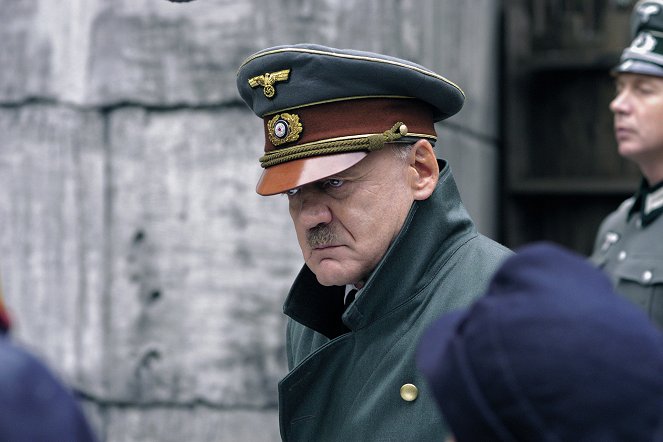
War films from the 1990s onwards from other European countries
The Spanish film Freedomfighters (1996) realistically portrayed the Spanish Civil War from the perspective of the women's revolutionary movement, and Land and Freedom (1995), The Last Circus (2010) and While at War (2019) were set in the same period. In contrast, the war drama Rescue Under Fire (2017) focused on Spanish troops fighting in Afghanistan. In Italy, the biggest success was the three Oscar-winning comedy-war film Life Is Beautiful (1997), about a Jewish waiter pretending to his young son that their stay in a concentration camp is actually part of a play organised for his birthday. Malena (2000) was also successful, dealing with the fate of a young war widow in occupied Italy and a teenage boy who becomes obsessed with her beauty. Hungary produced a number of successful war films, such as Fateless (2005) and The Notebook (2013), but by far the most acclaimed was the Oscar-winning and formally inventive Son of Saul (2015), which portrayed the horrors of the Holocaust from the perspective of a Jewish prisoner trying to bury the body of a teenage boy in a concentration camp.
Following the model of Who’s That Soldier? (1987), in the early 1990s, the Czech Republic produced other comedies focused on members of the mandatory military service such as The Tank Battalion (1991) and The Black Barons (1992). Later, the war drama about Czechoslovak airmen in the service of the British Royal Air Force, Dark Blue World (2001), and Tobruk (2008), which focused on Czechoslovak soldiers who fought in the Libyan desert during World War II, gained considerable acclaim. There have been several Czech films dealing with the assassination of Reich Protector Reinhard Heydrich and the subsequent Nazi retribution, including Protector (2009), Fall of the Innocent (2011) and Anthropoid (2016), a co-production with the UK and France. Another internationally successful film was The Painted Bird (2019), which depicted the state of society affected by the Second World War against the backdrop of the story of a young boy's harrowing journey through Eastern Europe.
Danish hits have included the relationship drama Brothers (2004), revolving around the trauma that one of its protagonists brought home after returning from his captivity in Afghanistan, and the war drama Land of Mine (2015), focusing on an event at the end of World War II when the Danish army forced German prisoners to remove landmines from the Danish coast. The Norwegian film Into the White (2012), an aerial war film co-produced with Sweden, was a hit. Serbian film director Emir Kusturica's Underground (1995), a war fresco of the Yugoslav people, received considerable acclaim, as did Danis Tanovic's Oscar-winning No Man's Land (2001), a satirical tale of several enemy soldiers and a landmine from the Bosnian War, and Paul Verhoeven's Black Book (2006), a Dutch film whose heroine is a Jewish resistance member tasked with infiltrating the Gestapo commanders. In an extensive international co-production, Steven Soderbergh made a pair of films, Che: Part One (2008) and Che: Part Two (2008), dedicated to the Cuban Revolution, the figure of the famous revolutionary and his guerrilla campaign in Bolivia.
Black Book (2006)
Photo © ContentFilm International
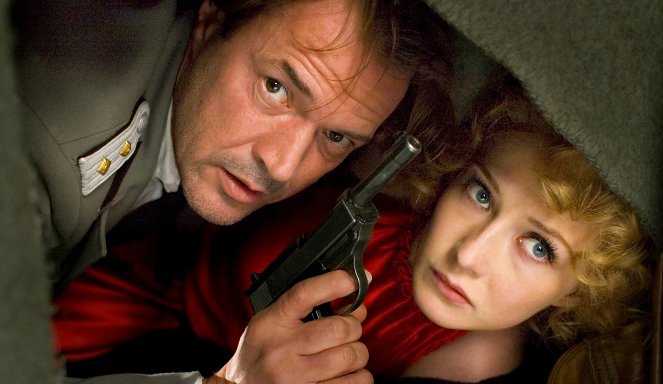
War TV series
In the 1950s, two of the most popular American wartime shows were Navy Log (1955-1958), dealing with the stories of the U.S. Navy during World War II, and The Silent Service (1957-1958), which described the lives of the members of a submarine crew. In the 1960s these were followed by series describing the struggles of soldiers fighting in various parts of Europe during World War II: The Gallant Men (1962-1963), Combat! (1962-1967) and the airborne Twelve O'Clock High (1964-1967), while comedy-war series and sitcoms such as McHale's Navy (1962-1966), Hogan's Heroes (1965-1971) and the British Dad's Army (1968-1977) also began to come to the fore. In the 1970s, the wartime sitcom M*A*S*H (1972-1983) became a phenomenon, following stories from a mobile military hospital in the Korean War. Also popular were the dramatic wartime series Baa Baa Black Sheep (1976-1978) and the British series Wings (1977-1978), about a pilot fighting in World War I. From the 1980s the shows worth mentioning include, for example, the seven-part miniseries The Winds of War (1983), as well as a pair of series dealing with the Vietnam War: Tour of Duty (1987-1990) and China Beach (1988-1991).
The ten-part series Band of Brothers (2001) became an outstanding event with its realistic depiction of the fate of an elite unit of the US Army during World War II, setting a new bar for the quality of television production. It was followed by The Unit (2006-2009), the miniseries Generation Kill (2008), set in the early days of the American invasion of Iraq, and the ten-part series The Pacific (2010), covering the events following the attack on Pearl Harbor. The subsequent growth of TV and internet VOD production has led to series such as Our Girl (2014-2020), Seal Team 6 (2017-2018), SEAL Team (since 2017), Das Boot (since 2018), Catch-22 (2019) and The Liberator (2020).
Filmmaniak
Best war films
Saving Private Ryan (1998) |
The Pianist (2002) |
Braveheart (1995) |
Life Is Beautiful (1997) |
Platoon (1986) |
Inglourious Basterds (2009) |
Black Hawk Down (2001) |
The Boat (1981) |
Hotel Rwanda (2004) |
Full Metal Jacket (1987) |
| All the best war films |
